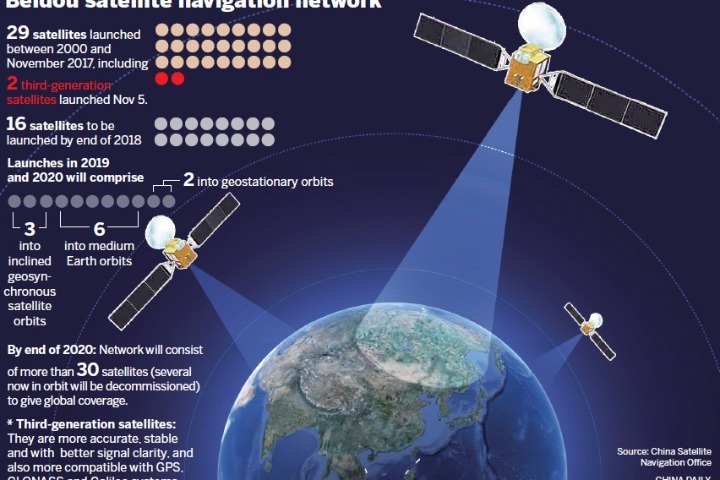5G satellite positioning system
China to complete Beidou satellite-based positioning system by June 2020- to be used with 5G
The Nikkei Asian Review reported on Friday that China will soon be completing its Beidou satellite-based positioning system as it moves to reduce its reliance on America’s GPS in both in telecommunications and for its military. The final two satellites for its Beidou satellite-based positioning system will be launched by June 2020, completing the 35-satellite network, Ran Chengqi, spokesperson for the Beidou Navigation Satellite System, told reporters in Beijing.
From modern farming to smart ports to a text messaging service, China is trying to build an ecosystem independent of the GPS and open it to Southeast Asia, South Asia, Africa and Eastern Europe. This effort pushes decoupling between Washington and Beijing, which are poised to enter year three of a trade war, to the final frontier of space.
Over 70% of Chinese smartphones are equipped to tap into Beidou’s positioning services, Ran said. The system also plays a role in fifth-generation wireless communications (5G), an area where China’s Huawei Technologies is in the vanguard of technological development.
“The integration of Beidou and 5G is an important sign on the path toward China’s development of information technology,” Ran said. “As a major space infrastructure for China to provide public services to the world, the Beidou system will always adhere to the development concept of ‘China’s Beidou, the world’s Beidou, and the first-class Beidou,’ serving the world and benefiting mankind,” he added.
China’s goal for Beidou is to rely less on the US for both its telecommunications and its military and to build an ecosystem independent of the GPS that would be open to Southeast Asia, South Asia, Africa and Eastern Europe.

Beidou was named after the Chinese term for the Big Dipper constellation. Beidou said its services will be enhanced by the end of next year. For example, the level of positioning accuracy will improve from within 5 meters to within centimeters, an advance that will aid search-and-rescue missions and also prove crucial for self-driving vehicles. Both Beidou and 5G will be employed by self-driving buses set to begin operation soon in the city of Wuhan. Beidou will also differentiate itself from GPS by supporting communication through its constellation of satellites.
China has launched 53 Beidou satellites since 2000, including those no longer in operation. The navigational system began worldwide services in late 2018. Beidou started offering positioning services to private-sector companies in late 2011.
The economic scale of services and production of goods tied to Beidou will grow to 400 billion yuan ($57 billion) in 2020, according to Chinese media.
Beijing aims to expand the system worldwide. China and Russia have allied on satellite positioning. Chinese officials are also pouring resources into collaborating with global organizations representing the airline industry and other sectors.
Space is one of the priority areas of Beijing’s “Made in China 2025” plan for boosting self-reliance in vital technologies. By 2030, China aims to become a “space power” alongside the US and Russia. The launch of a Martian probe is set for as early as next year, followed by the completion of a Chinese space station around 2022.
May 27, 2020 Update: Measuring the height of Mt. Everest
China’s network of Beidou satellites are being used in the survey to determine Mt. Everest’s current height and natural resources, the Xinhua News Agency reported. Data on snow depth, weather and wind speed is also being measured to aid in glacier monitoring and ecological protection.
……………………………………………………………………………………………………………………………………………..
References:
https://time.com/5755791/china-beidou-completion/
https://www.space.com/china-launches-beidou-3-satellite.html


